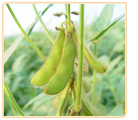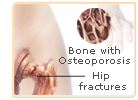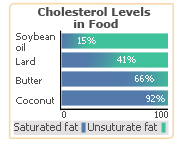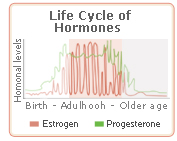Soy Overview
 Soy comes from soy bean. It is high in fiber, low in carbohydrates, and rich with proteins and minerals. As a dietary substitute, it has proved to be very healthy for both human and animal consumption. Due to its high amounts of phytoestrogenic hormones, Soy is considered a menopause herb, but before explaining its benefits and side effects. It is important to understand what is Soy. Soy comes from soy bean. It is high in fiber, low in carbohydrates, and rich with proteins and minerals. As a dietary substitute, it has proved to be very healthy for both human and animal consumption. Due to its high amounts of phytoestrogenic hormones, Soy is considered a menopause herb, but before explaining its benefits and side effects. It is important to understand what is Soy.
What is Soy
Soy has been the savior of many countries because it is a cheap and healthy source of protein and nutrition, and is easy to grow.
Background and History of Soy
Soy has traditionally been used in the Orient as a source of protein and medicine. Its popularity spread to the Western world in the 20th century, when it was used primarily as an oil product for industrialization. It later became a major source of animal feed and then eventually became a popular source of protein for humans.
Soy Properties
 A notable breakdown of soy�s composition shows that it contains phytoestrogens and isoflavones. These properties help to lower cholesterol and prevent the risk of heart disease, osteoporosis, and certain forms of cancer. They also ease menopausal symptoms. A notable breakdown of soy�s composition shows that it contains phytoestrogens and isoflavones. These properties help to lower cholesterol and prevent the risk of heart disease, osteoporosis, and certain forms of cancer. They also ease menopausal symptoms.
How does soy grow?
Soy is grown upright, saving space and allowing more to be grown in a limited area. This is especially helpful since soy actually deposits minerals back into the soil, making it more nutritious soil and better to plant in.
What does soy look like
The soy bean plant has green leaves. When the plant matures it develops beans that are similar in appearance to a pea pod. A young soy bean is green, but as it grows it turns either beige or brown. Click here to learn more about what is soy.
How Do Soy Isoflavones Work?
Isoflavones make up a class of organic compounds that have beneficial health properties, are antioxidants, and may even ward off disease.
Soy isoflavones can be found in miso, tofu, tempeh, cooked soy beans and soy germ, which can be added to cereal or smoothies. The easiest way to get a sufficient intake of isoflavones is by taking soy isoflavone concentrate.
How soy isoflavones work on the body
The isoflavones in soy enable it to fight against a number of diseases and relieve some ailments, which are listed below.
Cancer: Soy isoflavones attach to estrogen receptors in human cells and block estrogen from attaching. This prevents cancerous cells from forming on the bladder, colon, prostate, breast, and skin.
 Fracture / Osteoporosis: Soy isoflavones move calcium from the blood into the bones, strengthening them and preventing fracture and osteoporosis. Fracture / Osteoporosis: Soy isoflavones move calcium from the blood into the bones, strengthening them and preventing fracture and osteoporosis.
Menopause-related problems: Without creating estrogen-related problems, soy isoflavones can relieve menopausal symptoms such as hot flashes and night sweats.
Psoriasis: The genistein in soy can reduce the formation of keratin which is a skin protein associated with psoriasis. Click here to learn more about how soy isoflavones works.
Uses of Soy
Soy is used for both industrial and dietary purposes and it has proved to be a profitable industry in both areas.
 Cultural practices and traditional uses of soy: Soy was used primarily for dietary needs. Soy sauce was also popular as a flavoring agent but it was also used for medicinal purposes as an ointment for wounds and ulcers. Cultural practices and traditional uses of soy: Soy was used primarily for dietary needs. Soy sauce was also popular as a flavoring agent but it was also used for medicinal purposes as an ointment for wounds and ulcers.
Modern uses of soy: Today soy is used as animal feed and as a protein supplement for meat.
Different soy products: Listed below you will find some edible and non-edible soy products.
. Soy milk.
. Cheese.
. Flour.
. Ice cream.
. Chips, Butter.
. Vodka.
. Cooking oil.
. Stock feed.
. Meat replacement.
. Candles, Soap.
. Cosmetics.
. Inks.
. Biofuel.
. Resins.
. Plastics.
. Clothing.
Besides Tofu:
. Tempeh.
. Soy milk.
. Chocolate soy milk.
. Soy flour breads.
. Soy cereals.
. Soy burgers.
. Soy butter.
. Roasted soy nuts.
. Soy yogurt.
. Soy cheese.
** Diets that contain one or two soy servings a day reduce hot flashes and vaginal dryness and may even help maintain bone mass.
Soy use safety: One concern with soy products is their ability to increase the risk of breast cancer, hyperthyroidism, and infertility. It is important for people considering taking soy to talk with their doctors and nutritionists first. Click here to learn more about uses of soy.
Soy Benefits
Because soy contains proteins, calcium, magnesium, and amino acids, it has proved to be very helpful in preventing illness.
Overall Benefits of Soy
Strong bones: Soy contains isoflavones that may prevent bone breakdown and work in the same fashion as estrogens in maintaining bone tissue.
Cancer Prevention: Soy can prevent prostate cancer in men. For pre-menopausal women it can also act as a preventative for breast cancer though it may increase the risk of this type of cancer in post-menopausal women.
 Reduced Heart Risk: Soy helps to control cholesterol levels because it contains fiber. The isoflavones in soy increase the flexibility of blood vessels, helping to prevent strokes or heart attacks which can result from a build-up of plaque. Reduced Heart Risk: Soy helps to control cholesterol levels because it contains fiber. The isoflavones in soy increase the flexibility of blood vessels, helping to prevent strokes or heart attacks which can result from a build-up of plaque.
Menopause: Because of its estrogen-like properties, soy can help alleviate menopausal symptoms which occur as a result of reduced estrogen levels. Click here to learn more about benefits of soy.
Soy Side Effects
Though soy has many beneficial qualities, it has some drawbacks. There are a few things to consider before consuming soy products.
Warnings: For those who have the soybean allergy, it can be very difficult to avoid foods that do not contain soy as soy is in a vast majority of foods worldwide.
Side Effects: Listed below are a few of the major side effects of soy intake.
 Infertility: Some studies have revealed no great change in birthrate between countries whose inhabitants consume a lot of soy and those who do not. Other research has shown that soy milk, when consumed in large amounts, can decrease certain hormones needed for reproduction. More research is needed. Infertility: Some studies have revealed no great change in birthrate between countries whose inhabitants consume a lot of soy and those who do not. Other research has shown that soy milk, when consumed in large amounts, can decrease certain hormones needed for reproduction. More research is needed.
Breast Cancer: In younger, pre-menopausal women soy may actually prevent breast cancer while the opposite may occur in post-menopausal women.
Hypothyroidism: Soy products may increase the risk of thyroid disease. Infants on soy milk are more likely to develop thyroid disease than infants on normal formula. Click here to learn more about side effects of soy.
Soy and Menopause
Soy has proven very helpful in alleviating menopausal symptoms. With its estrogen-like properties, soy can help balance hormones in menopausal women.
 Soy for menopausal women: Fluctuating levels of estrogen can lead to hot flashes, night sweats, vaginal dryness, insomnia, and headaches. Soy acts as a safer alternative to Hormone Replacement Therapy which brings about a slew of unwanted side effects and can be costly. The isoflavones found in soy have many beneficial health properties including: Soy for menopausal women: Fluctuating levels of estrogen can lead to hot flashes, night sweats, vaginal dryness, insomnia, and headaches. Soy acts as a safer alternative to Hormone Replacement Therapy which brings about a slew of unwanted side effects and can be costly. The isoflavones found in soy have many beneficial health properties including:
. Antioxidants properties.
. Preventing fractures.
. Easing symptoms of menopause.
. Easing symptoms of diabetes.
. Potentially warding off disease such as cancer, psoriasis, and osteoporosis.
Click here to learn more about soy and menopause.
Which herb should women try? Today women are looking for relief from their menopause symptoms with herbs. Phytoestrogenic herbs and non-estrogenic herbs are good in relieving menopause symptoms, but recent studies show that non-estrogenic herbs have no side effects because they help the body to produce its own hormones instead of introducing hormones like the phytoestrogenic ones. Learn more about non-estrogenic herbs for menopause. | 

